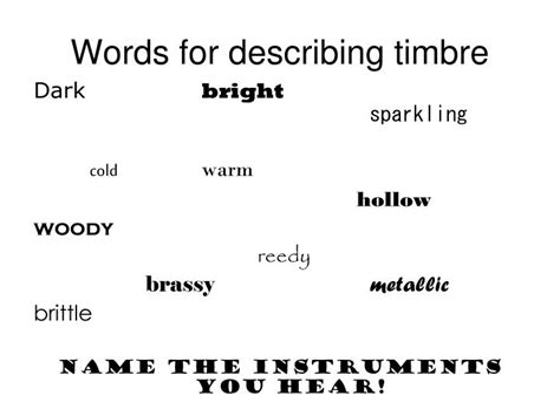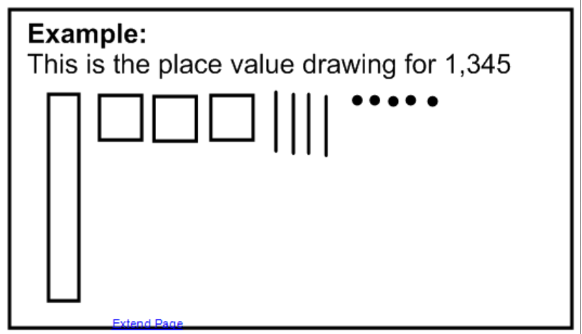PLACE VALUE: DYNAMIC NUMBERS 3
PLACE VALUE: DYNAMIC NUMBERS
Learning Description
Students will be able to read and write multi-digit whole numbers up to 10,000 using theatre techniques to model base-ten numerals and expanded form. Students will use vocal elements (e.g. pitch) to communicate a digit’s value in numbers.
Learning Targets
"I Can" Statements
“I Can…”
- I can use my voice and body to represent place value.
- I can explain what place value is.
- I can tell the value of digits in different place value positions.
- I can express numbers in standard form, expanded form, and word form.
- I can represent place value in multiple ways (concrete and abstract).
Essential Questions
- How do actors use their voices and bodies as tools of communication?
- What is place value?
- What is standard and word form?
- How can I represent place value in expanded form?
- How can I represent place value using theatre techniques?
Georgia Standards
Curriculum Standards
3.NR.1 Use place value understanding to represent, read, write, and compare numerical values up to 10,000 and round whole numbers up to 1,000.How can we compare numbers?
3.NR.1.1 Read and write multi-digit whole numbers up to 10,000 to the thousands using base-ten numerals and expanded form.
3.NR.1.2 Use place value reasoning to compare multi-digit numbers up to 10,000, using >, =, and < symbols to record the results of comparisons.
Arts Standards
TA3.PR.1 Act by communicating and sustaining roles in formal and informal environments.
a.Use vocal elements (e.g. inflection, pitch, volume, articulation) to communicate a character’s thoughts, emotions, and actions.
c. Collaborate and perform with an ensemble to present theatre to an audience.
TA3.RE.1 Engage actively and appropriately as an audience member.
a. Participate as an audience.
b. Demonstrate appropriate theatre etiquette.
South Carolina Standards
Curriculum Standards
3.NSBT.5 Compare and order numbers through 999,999 and represent the comparison using the symbols >, =, or <.
Arts Standards
Anchor Standard 3: I can act in improvised scenes and written scripts.
Anchor Standard 5: I can interpret and evaluate live or recorded dramatic performances as an active audience member.
Key Vocabulary
Content Vocabulary
- Place value - The value of each digit in a number based on its position
- Ten-thousands - The fifth position represents the number of ten-thousands
- Thousands - The fourth position represents the number of thousands
- Hundreds - The third position represents the number of hundreds
- Tens - The second position represents the number of tens
- Ones - The rightmost position (1st place) represents the number of ones
- Expanded form - A way of writing numbers to show the value of each digit according to its place value; it breaks down a number by expressing it as the sum of each digit multiplied by its place value
- Standard form - The way of writing numbers using digits, without breaking them down by place value or expanding them
- Numerical - Using digits to represent quantities, values, or amounts
- Digits - Symbols used to represent numbers in a numeral system
Arts Vocabulary
- Pitch - The highness or lowness of an actor’s voice
- Voice – An actor’s tool, which we shape and change to portray the way a character speaks or sounds
- Body – An actor’s tool, which we shape and change to portray the way a character looks, walks, or moves
- Ensemble - All the parts of a thing taken together, so that each part is considered
- Audience - The group of people who watch and experience the performance
- Levels - One of the aspects of movement (there are three basic levels: high, middle, and low)
Materials
- Pre-made "commas" (paper cut-outs) for students to hold
- Note cards (one per student)
- Pencils
- Single digit numbers (one per student)
- What is Characterization video
Instructional Design
Opening/Activating Strategy
- Introduce the "Count Up" game to students.
- Instruct students to close their eyes and call out numbers by counting on. Start with 1-2-3. Then move on to counting by tens and hundreds.
- Example:
- Student one says, “One”.
- Student two says, “Two”.
- If two students say the same number, the activity must start over.
- Now tell students that they will play again. This time they will change the pitch of their voice to represent the value of the number.
- The higher the voice level, the larger the number.
- The lower the voice level, the smaller the place value.
- Example:
Work Session
- Students will be put into groups of five students.
- Each student in the group will be given a digit. Each group should create a five digit number.
- Give each group a note card and pencil. Once students determine their number, they should write their number in expanded form.
- Example: If students received the digits, 2, 5, 3, 9 and 7, they might create the number 25,397.
- Students should write this number in standard form, placing the comma in the correct spot.
- Each student will then write the expanded form of their digit on their individual notecard.
- Example:
- Card 1: 20,0000
- Card 2: 5,000
- Card 3: 300
- Card 4: 90
- Card 5: 7
- The students will model the values of each digit using different voice levels (pitch), body levels, and placement.
- Example:
- Pitch: The higher the voice level, the larger the place value; the lower the voice level, the smaller the place value
- Body level: The taller the student stands (high level), the larger the place value; the lower the student stands/crouches, the smaller the place value
- Placement: Students should order themselves according to where their place value is located
- When students perform their number, the number should be read in word form: “Twenty-five thousand three hundred ninety-seven”.
- Example:
- Tell students that they will repeat the process again; this time they should rearrange the digits in their number so that no digit is in the same place value.
- Example: 25,397 becomes 79,352.
- Example:
- Example: If students received the digits, 2, 5, 3, 9 and 7, they might create the number 25,397.
Closing Reflection
- Each group will share their performances of each number. The class will then help them determine which number performed is greater by recording each number on scratch paper and writing a “<” or “>” symbol in between the two numbers.
- Students will reflect on their process and how they used their voices and bodies to represent place value in their STEAM journals.
Assessments
Formative
- Teachers will assess student learning by observing whether students can:
- Use their voices and bodies to represent the place value of each digit in a five digit number
- Write numbers in standard and expanded form
- Say numbers in word form
- Compare two numbers using place value reasoning
Summative
- Rubric:

DIFFERENTIATION
|
Accelerated: Who am I? Students will be given unknown numbers in name badges. The badge will be pinned to their back. Students will ask yes/no questions regarding the digits and places for their "unknown" number. They will characterize and demonstrate understanding of multi-digit numbers represented in name badge (ie- 57,329). Remedial: Students can be given badges with single digits and grouped into smaller groups (less digits) to demonstrate understanding of place value of numbers less than 1,000. |
CREDITS
U.S. Department of Education- STEM + the Art of Integrated Learning
Ideas contributed by: SAIL Grant Teacher Leaders, Barry Stewart Mann
*This integrated lesson provides differentiated ideas and activities for educators that are aligned to a sampling of standards. Standards referenced at the time of publishing may differ based on each state’s adoption of new standards.
Revised and copyright: June 2025 @ ArtsNOW










